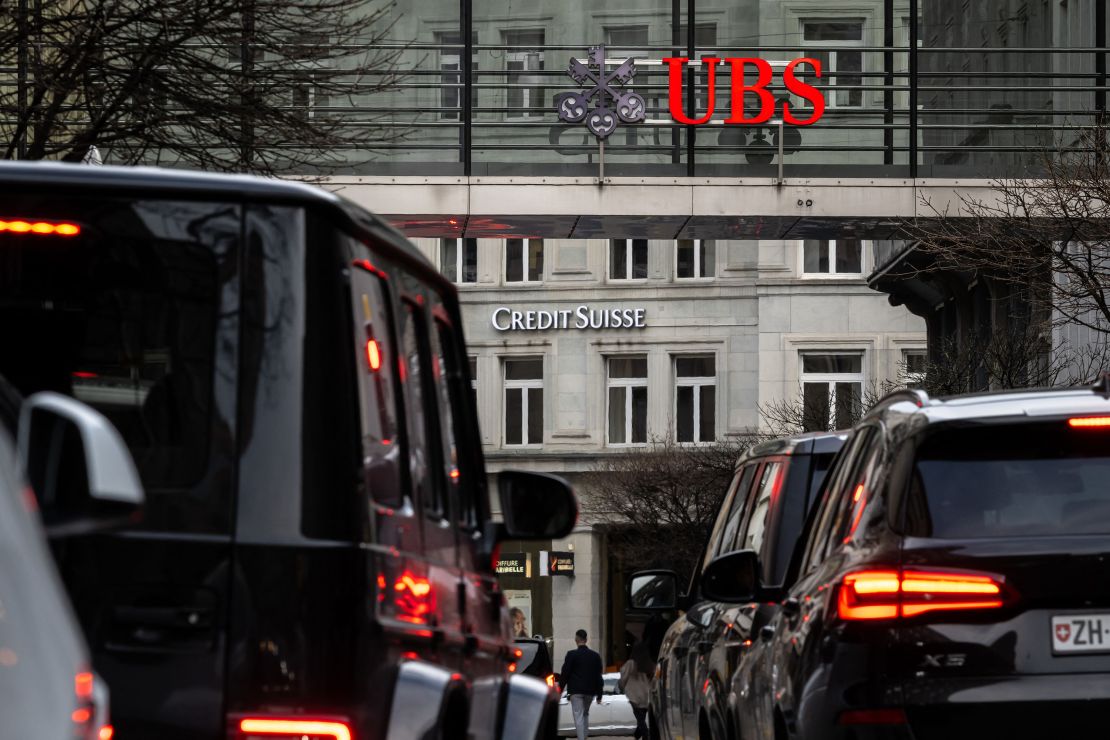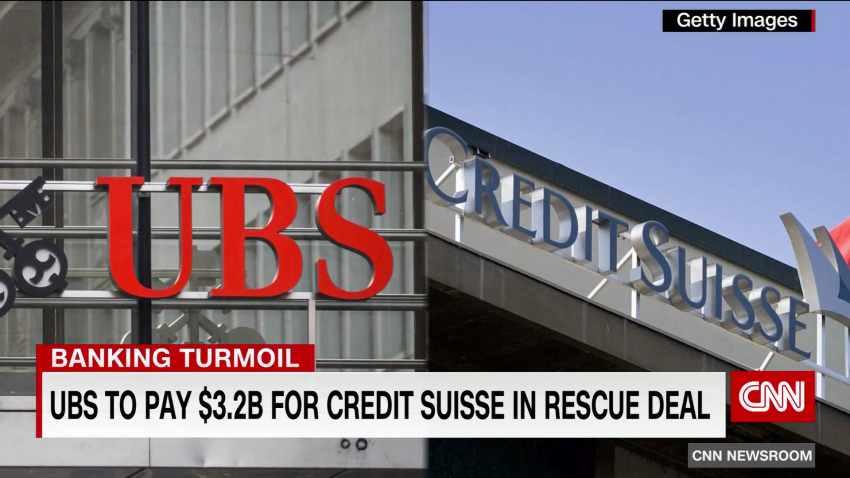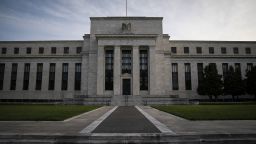On a Sunday in March 2008, the US government and bankers raced to finalize a rescue of Bear Stearns, pushed to the brink of collapse by what amounted to a run on the bank.
A fire sale to JPMorgan Chase (JPM) was agreed on March 16, 2008 for $2 a share, a 93% discount to Bear Stearns’s closing price the preceding Friday. (The price was later increased to $10 a share.)
The deal, done under the direction of the Federal Reserve and the US Treasury, marked the end of the road for one of Wall Street’s most storied firms. The 85-year-old investment bank was the first domino to fall in the financial crisis that ravaged global markets and had dire consequences for the US and European economies.

Almost exactly 15 years later, in an eerily familiar sequence of events, regulators and bankers in Switzerland scrambled over the weekend to piece together a takeover of Credit Suisse, after an emergency loan from the Swiss National Bank failed to reassure clients and investors.
The buyer was another larger rival, UBS (UBS). The price, 3 billion Swiss francs ($3.25 billion), was about 60% less than the bank was worth when markets closed two days prior. The deal was again done at the behest of regulators.
The Swiss government said Tuesday it had ordered Credit Suisse to temporarily suspend the payment of some bonuses, including share awards, to bank staff. It’s an ignominious end to Credit Suisse’s 167-year history, and the failure raises fresh questions about whether this is the start of a broader banking meltdown.
“I think the answer is no one knows. It doesn’t look great, but equally it could look a lot worse,” said Jonas Goltermann, deputy chief markets economist at Capital Economics.
The actions of central banks and regulators have restored “a degree of stabilization” but “only time will tell” whether that will be enough to stem a wider crisis.
“If we stabilize over a couple of weeks and months, we’ll know the worst has passed,” he told CNN on Monday.
Credit Suisse is the first “global systemically important” bank to be rescued since 2008. The list, which denotes banks whose failure might trigger a worldwide financial crisis, comprises just 30 lenders, including JPMorgan, Bank of America (BAC), HSBC (HBCYF), Barclays (BCS) and Bank of China (BACHF).
Yet despite its importance to the financial system, most analysts are not expecting Credit Suisse’s demise to mark the beginning of another global financial crisis.
The greater risk, they say, is that tension in the financial system causes banks to restrict lending. A credit crunch would weigh on households and businesses, raising the risk of recession. That could lead to an increase in bad debts and losses for lenders, which their current capital cushions might not be big enough to absorb.
“There’s no question that the banking system in aggregate is in a better position now than 15 years ago,” Goltermann continued. “We have a better buffer, but is it going to be enough?”
Central bank firepower
Banks in the United States and Europe are in much better financial shape than they were in 2008. Significant regulatory reforms since the crisis mean that bank balance sheets have been strengthened and exposure to risky loans significantly reduced.
“It’s not to say there won’t be more small banks that fall over… But it’s not an ‘across the board’ situation like we had in 2008 because the oversight is a lot stronger,” said Annelise Peers, the chief investment officer at Investec Bank Switzerland.
Not only is there less anxiety about the stability of banks, but there is also greater confidence in the powers of regulators to contain a broader crisis.
Based on the experience gained from previous crises, including the coronavirus pandemic, central banks have developed a number of tools to provide financing to markets quickly if needed.
On Sunday, the Federal Reserve, the European Central Bank, the Bank of England and the central banks of Canada, Japan and Switzerland agreed to make an emergency supply of dollars available until at least the end of April to prevent liquidity from drying up.
This coordinated action indicates how seriously they are taking the risk of broader contagion.
In a sign of the relative health of their balance sheets, European banks showed limited appetite Monday for the emergency facility.
While many smaller US banks have tapped a new Fed lending program, established after Silicon Valley Bank collapsed on March 10, none have borrowed on terms that suggest they are on the brink of failure.
Confidence is crucial
But capital and regulation are not enough. Banks also depend on customers’ and investors’ perceptions of them. Credit Suisse’s healthy capital and liquidity ratios did not save it once confidence evaporated.
Central banks and governments would struggle to calm markets in the face of a broader collapse in confidence that causes more bank runs of the kind that claimed Credit Suisse, Silicon Valley Bank and Signature Bank. That’s why regulators are acting so forcefully to boost trust in banks.
“Banking is all about trust; that can evaporate at any time and I think that is [creating] the big nerves,” said Rupert Silver, director of fixed income at Credo Group, a UK-based wealth manager.
There is “notably more risk” among US regional banks, which are subject to lighter regulation than large lenders, he added. “I’m much less worried about Europe and the UK… the banks are dramatically well-capitalized [and] the vast majority are making more money than they have ever made before.”
Shares of First Republic (FRC), a regional US bank, closed 47% lower Monday even as stock markets posted gains on investor optimism that regulators have contained the worst of the crisis.
Beware the credit crunch
Troubles at First Republic and other regional US banks serve as a cautionary reminder that a sharp increase in interest rates since last year also poses a risk to banks other than SVB.
“While it’s tempting to dismiss the problems at SVB, Signature Bank and Credit Suisse as idiosyncratic, they have revealed that problems are lurking in the financial system as interest rates rise,” said Neil Shearing, group chief economist at Capital Economics.
“Key areas to monitor include smaller European banks and shadow banks,” Shearing added.
“Shadow banks,” or non-bank financial institutions, refer to specialized lenders that fall outside the traditional banking sector. These can include mortgage and vehicle finance companies, as well as some hedge funds, private credit funds and money market funds.
On the one hand, the run-up in interest rates has made lending more lucrative for banks, helping to raise aggregate EU banking sector profitability to its highest level since 2014.
But on the other hand, higher rates have hit the value of some of banks’ assets, including government bonds. Meanwhile, weaker economic growth and rising borrowing costs are making it harder for their customers to repay loans.
The risk is that banks, which have already tightened credit and increased provisions for bad debt, adopt an even more cautious approach to lending in response to recent market turmoil. That would crimp consumer demand and business investment and could trigger an economic downturn.
“If banks are under stress, they might be reluctant to lend,” US Treasury Secretary Janet Yellen said last week in testimony to the Senate Finance Committee. “We could see credit become more expensive and less available.”
In remarks to be delivered later on Tuesday, she will also say the US federal government may have to come to the rescue of uninsured bank depositors once again if smaller lenders suffer bank runs like the one that felled SVB.
Shearing sees a greater danger. “It’s possible that a vicious circle develops, in which credit tightens, the real economy deteriorates, and default rates start to rise,” he said. That would be an “altogether more serious crisis.”
— Matt Egan contributed reporting.







